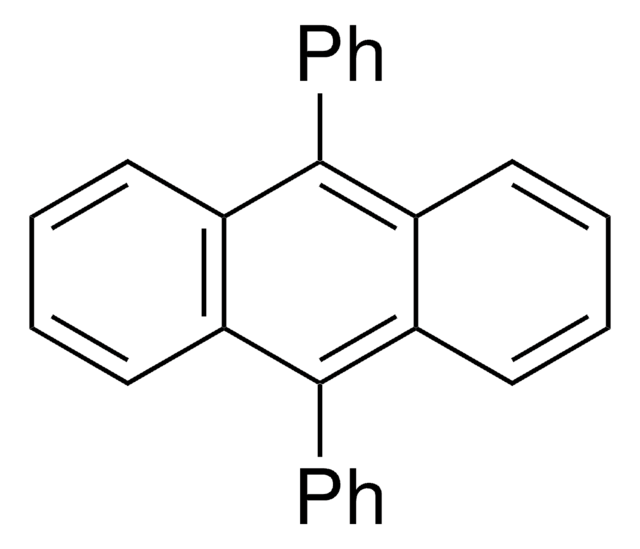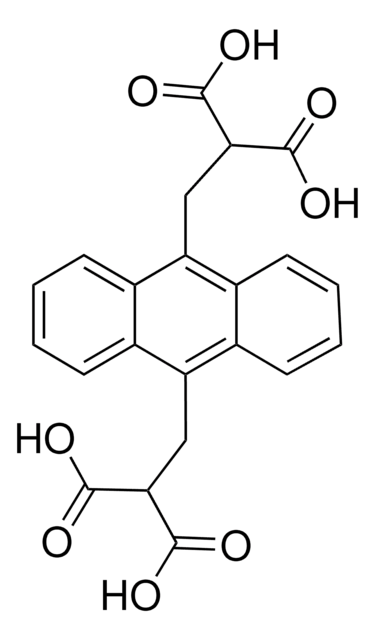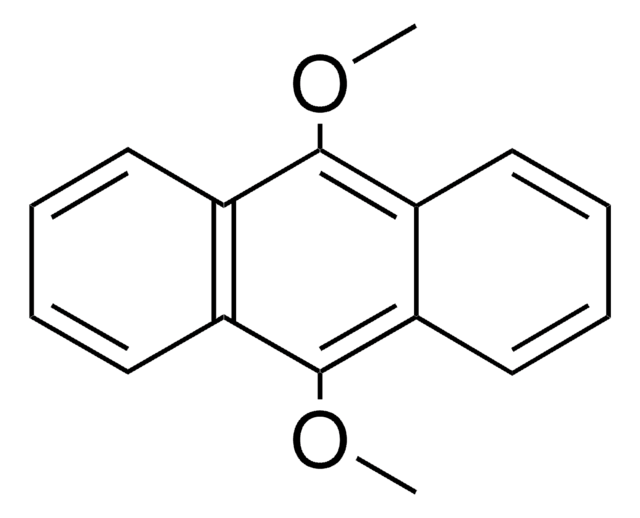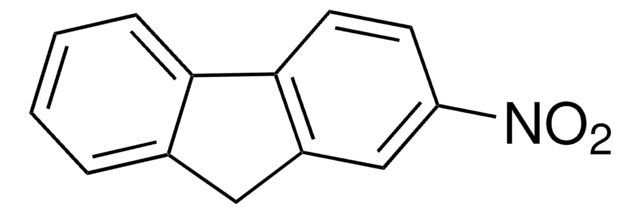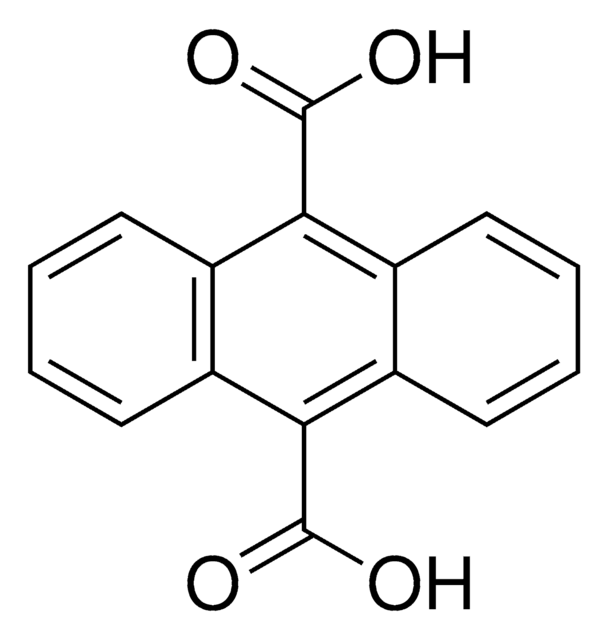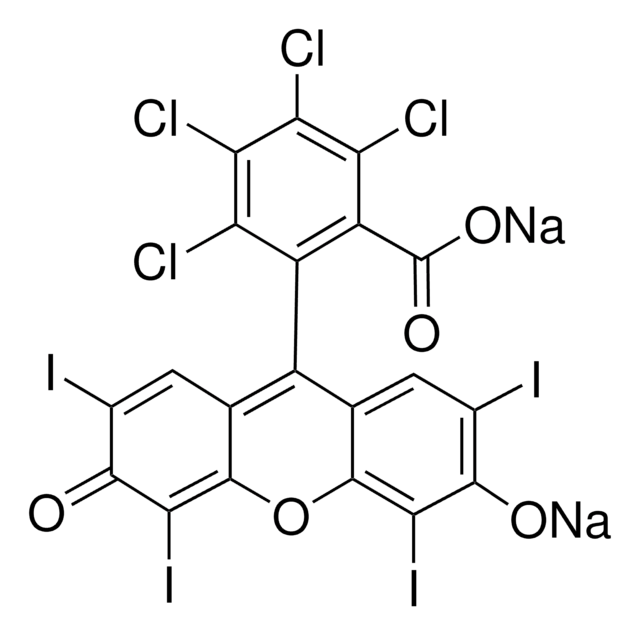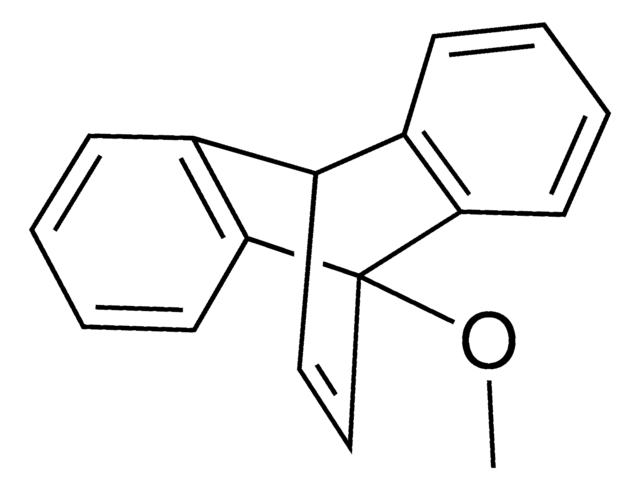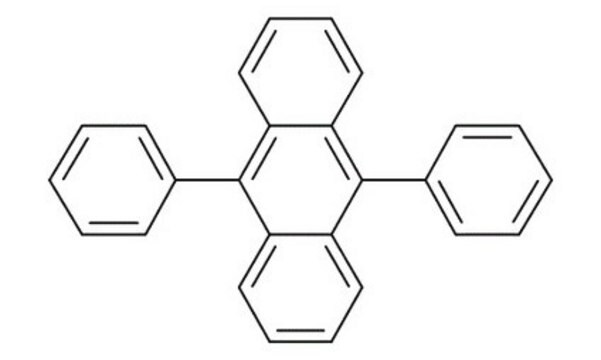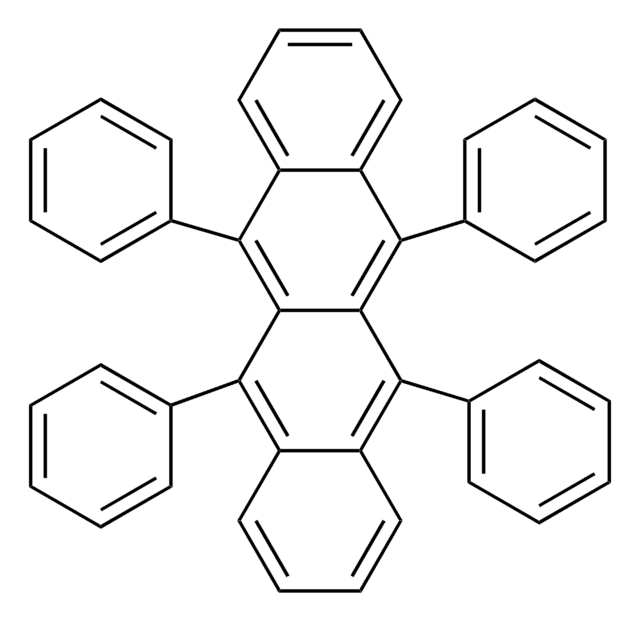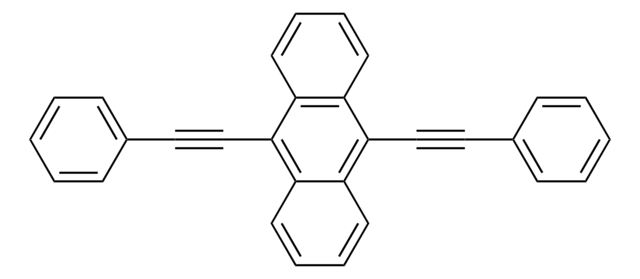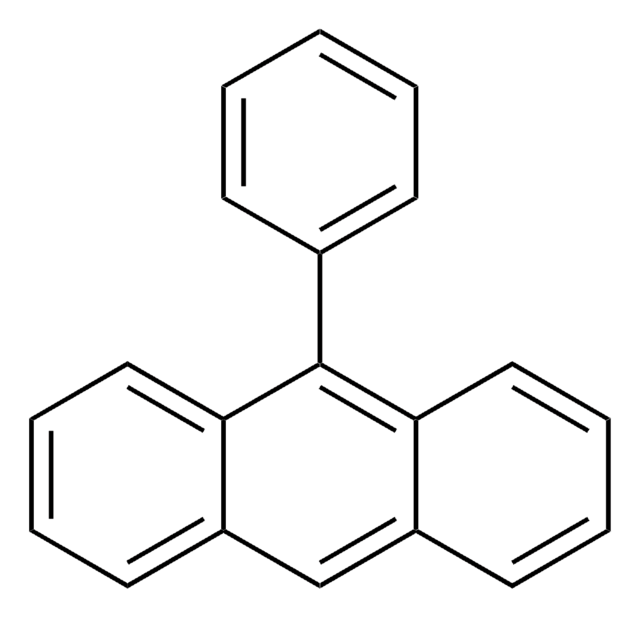D146706
9,10-Dimethylanthracene
99%
Synonym(s):
9,10-Dimethylanthracene
Sign Into View Organizational & Contract Pricing
All Photos(1)
About This Item
Empirical Formula (Hill Notation):
C16H14
CAS Number:
Molecular Weight:
206.28
Beilstein:
1909028
EC Number:
MDL number:
UNSPSC Code:
12352100
PubChem Substance ID:
NACRES:
NA.22
Recommended Products
Quality Level
Assay
99%
form
crystals
mp
182-184 °C (lit.)
SMILES string
Cc1c2ccccc2c(C)c3ccccc13
InChI
1S/C16H14/c1-11-13-7-3-5-9-15(13)12(2)16-10-6-4-8-14(11)16/h3-10H,1-2H3
InChI key
JTGMTYWYUZDRBK-UHFFFAOYSA-N
Looking for similar products? Visit Product Comparison Guide
Signal Word
Danger
Hazard Statements
Precautionary Statements
Hazard Classifications
Acute Tox. 4 Dermal - Acute Tox. 4 Inhalation - Resp. Sens. 1 - Skin Sens. 1
Storage Class Code
11 - Combustible Solids
WGK
WGK 3
Flash Point(F)
Not applicable
Flash Point(C)
Not applicable
Personal Protective Equipment
dust mask type N95 (US), Eyeshields, Gloves
Choose from one of the most recent versions:
Already Own This Product?
Find documentation for the products that you have recently purchased in the Document Library.
Customers Also Viewed
Alan Sholto et al.
Photochemical & photobiological sciences : Official journal of the European Photochemistry Association and the European Society for Photobiology, 7(3), 344-351 (2008-04-05)
Six amphiphilic silicon phthalocyanines (SiPc's) axially linked to a dimethylated amino alkyl group of varying length have been examined for their potential suitability as photosensitizers for photodynamic therapy (PDT). This group of molecules was chosen because the length of the
David Bailey et al.
Chemical communications (Cambridge, England), (20)(20), 2569-2571 (2005-05-19)
Irradiating 2,3,6,7-tetraphenylanthracene in the presence of 9,10-dimethylanthracene leads to exclusive formation of the cross-dimer. No photochemical reaction is observed when either of these chromophores is irradiated in the absence of the other.
E Gross et al.
Photochemistry and photobiology, 57(5), 808-813 (1993-05-01)
Two new sensitizers are introduced for a potential use in photodynamic therapy: Zn(2+)- and MG(2+)-tetrabenzoporphyrin (ZnTBP and MgTBP). A comparative study of the quantum yields of singlet oxygen generation (phi delta) of hematoporphyrin derivative (HpD), Photofrin II (PF-II), Zn(2+)-phthalocyanine tetrahydroxyl
E W Vogel et al.
Mutation research, 250(1-2), 291-298 (1991-09-01)
A set of six Drosophila strains was developed, by inducing by chemical treatment with N-ethyl-N-nitrosourea (ENU) new white and, in some strains, yellow mutations in 3 wild-type (WT) and 3 insecticide-resistant (IR) populations. These strains were previously shown to vary
M Elisa Milanesio et al.
Photochemical & photobiological sciences : Official journal of the European Photochemistry Association and the European Society for Photobiology, 2(9), 926-933 (2003-10-17)
A novel 5-[4-(trimethylammonium)phenyl]-10,15,20-tris(2,4,6-trimethoxyphenyl)porphyrin iodide (2) has been synthesized. A positive charge was incorporated at a peripheral position to increase the amphiphilic character of the structure. The photodynamic effect of the cationic porphyrin 2 was compared with that of non-charged 5-(4-aminophenyl)-10,15,20-tris(2,4,6-trimethoxyphenyl)porphyrin
Our team of scientists has experience in all areas of research including Life Science, Material Science, Chemical Synthesis, Chromatography, Analytical and many others.
Contact Technical Service